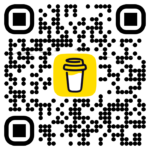The smartphone revolution has fundamentally reshaped how we consume information and interact with the digital world. Unlike expansive desktops with precise mouse clicks, mobile interfaces must cater to a single, dominant input: the thumb.
This ergonomic reality has a profound impact on design decisions, influencing everything from button placement to information hierarchy.
In this context, bottom navigation emerges as a user-centric solution perfectly tailored for one-handed mobile interaction.
The Power of the One-Handed Thumb Zone
Scientific studies examining one-handed mobile usage, such as this one (1), highlight the concept of the “one-handed thumb zone.”
This zone encompasses the lower half of the screen, a region easily reachable by the thumb without compromising user comfort or requiring awkward hand contortions.
The area your thumb can comfortably reach without excessive stretching or hand gymnastics becomes the prime real estate for crucial app interactions.
Bottom navigation leverages this natural thumb reach, strategically placing essential navigation elements within this zone to optimise reachability and comfort of use.
Cognitive Fit: Streamlining User Navigation
Cognitive science informs the design of effective bottom navigation by acknowledging the way our brains categorise and prioritise information.
Bottom navigation takes advantage of this by presenting a limited set of core navigation options (3-5).
This “cognitive fit” minimises mental strain, reduces decision fatigue, and the need for extensive searching or scanning through menus, and ultimately fosters a sense of control over their navigation journey within the app.
Beyond Usability: The Science of User Behaviour
While usability is paramount, effective bottom navigation design goes beyond functionality. By understanding principles of user behaviour and psychology, we can create a truly user-centric experience.
Here is how:
Reduced Distraction and Enhanced Focus
Distraction is a major enemy of user engagement, especially on mobile devices with constant notifications and competing stimuli.
By consolidating core navigation options at the screen’s bottom, we minimise visual clutter and prevent users from getting overwhelmed.
This clear separation between navigation and content reinforces a hierarchy of information, keeping the focus on the task at hand.
Additionally, the placement within the “one-handed thumb zone” not only optimises reachability but also minimises accidental taps that could disrupt user flow.
Ultimately, bottom navigation empowers users to achieve their goals efficiently by streamlining access to functionalities, leading to a more focused and productive user journey.

Mental Model Harmony
Effective bottom navigation design leverages the power of mental models to create an intuitive and user-friendly experience.
Mental models are essentially internal representations of how the world works, formed through past experiences and interactions.
When users encounter an app that adheres to established mental models for mobile navigation, they can grasp the app’s structure and functionality without extensive learning.
By placing core navigation elements in expected locations, such as the “Home” icon in the bottom left position and the “Profile” icon on the bottom right, users can intuitively navigate the app.
This consistency reduces cognitive load, eliminates the need for users to re-learn navigation patterns from scratch, and fosters a sense of familiarity.
This translates to faster onboarding, increased user engagement, and a smoother overall experience.
- Accessibility for All
Bottom navigation should be designed with accessibility in mind. This includes ensuring sufficient colour contrast between icons and the background to accommodate users with visual impairments.
WCAG (Web Content Accessibility Guidelines) offers valuable resources for ensuring your designs are accessible to a wider audience.
Consider offering alternative navigation methods like gestures or voice commands for increased inclusivity. This not only expands your user base but demonstrates a commitment to user-centred design principles.
Overall, the thoughtful design of the bottom navigation can create a more inclusive experience by making core app functions easily accessible to a wider user base.
Thumbs rule the mobile world, and understanding their science unlocks the secrets of successful bottom navigation design.
When we factor in user cognition and behavioural principles, navigation goes beyond function – it becomes intuitive, efficient, and accessible.
This translates to a user experience that’s not just usable, it’s delightful and engaging.
The result? Stronger brand loyalty and a mobile application poised for long-term success.
As the mobile landscape continues to evolve, one thing remains constant: thoughtful bottom navigation design, built for one-handed usability, will be a cornerstone of any winning mobile app.
Thanks for being here!
I hope you found it useful!
This space thrives because of YOU. ❤️
If the resources I share help you grow in your career, a small contribution from you could keep this community strong.
Together, we’re building a space to learn, grow, and support each other on this design journey.
Every bit helps, and by supporting me, you’re directly helping keep this space alive and growing.
Or simply scan this QR code ⬇️

Your support means a lot!
You might also like:
Share this article:




